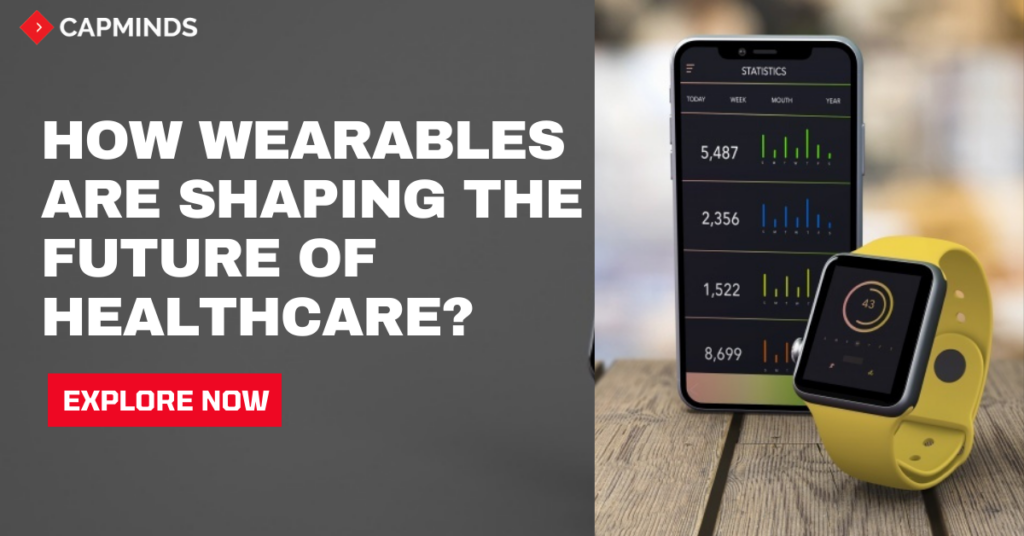How Wearables Are Shaping The Future Of Healthcare?
When wearables are first introduced in the healthcare market – the devices are very simpler and used for tracking workouts and fitness geeks. Even though many of the existing wearables in the healthcare market has been reached decades ago, there are some difficulties with the equipment (hard to use or intrusive). But today due to advanced cloud, AI and IOT technological development, the wearable is built with sensors and multiple functions are revolutionary in personalized medicine.
Wearable technologies offer a smart way to monitor many physiological features, presenting a multitude of healthcare solutions. If you start the wearable listing, from Apple watch’s to new health monitoring systems, wearable health technologies hold numerous effective applications in healthcare.
Today, even the modest wearables have sensors to follow things like pulse, temperature, and blood oxygen immersion, while better quality gadgets, on account of the Apple Watch, can even quantify the heart’s electrical movement with a solitary lead ECG. As the wearable tech industry has been developed, healthcare organizations are starting to look for their next phase of growth. In this article, we explained how wearable technologies are shaping the future of healthcare.
Augmenting Clinical Data With The Helps Of Wearable’s
The wearable gadgets keep on developing more modern incapacity, checking monitoring activities, for example, blood-oxygen levels, blood glucose levels, and electrodermal exercises. Given the entirety of this, what requirements to occur for wearable medical services gadgets to accomplish a degree of trust so they could increase clinical information to educate medical care decisions?
RELATED: DIGITAL HEALTH: THE NEXT BIG THING IN VALUE BASED CARE
For one thing, wearables should be more imbued into the regular day to day existences of considerably more individuals. To arrive at this level, they’ll need to catch valuable health information more precisely. For instance, the biosensors that are key to data capture should have the option to conquer challenges related to skin tone, sweat, blood perfusion, and other biological factors. The gadgets ought to likewise work for long periods between charges without running excessively hot.
The initial step toward bringing healthcare wearables into patient care depends on terms of accuracy. This would include health information gathered by wearables with information collected utilizing clinical equipment for a population of people. The clinically determined information would fill in as reality to approve the precision of the wearable information.
Healthcare Wearables – An Overview
Wearable Fitness Tracker
Wearable wellness tracker – one of the simplest and most unique types of wearable technologies; wristbands furnished with sensors to monitor the client’s active work and pulse. They furnish wearers with wellbeing and wellness suggestions by adjusting to different smartphone applications.
Tech Savvy Health Watches
Smartwatches have now transformed the way of monitoring patient’s healthcare as serves to be a clinically viable healthcare tool. Apple launched the Apple Heart Study app in 2017 to monitor users’ heart rhythms and alert those who need immediate care. Smartwatches offer all the advanced facilities which can be performed normally on phones – send messages, read notifications, make phone calls in need of emergency care, and also the advantages of wellness trackers.
RELATED: THE NEXT BIG HEALTHCARE MARKETING TRENDS FOR 2021
Wearable ECG Monitors
Wearable ECG screens are on the demand list of buyer gadgets, and what separates these monitors from some smartwatches, is their capacity to gauge electrocardiograms or ECGs. The Move ECG can easily measure an electrocardiogram and send the resultant readings to the client’s physician. Apart from this, the wearable ECG monitors also can track speed, distance, and height as well as automatic tracking for swimming, walking, and more.
Biosensors
Biosensors are new and trending wearable clinical gadgets that are different from smartwatches and wrist trackers. The wearable biosensor is a self-adhesive fix that permits patients to move around while gathering information on their temperature, heart rate, respiratory rate, and more. This ultimately shows the capacity of wearable’s which reduces staff workload and improves patient outcomes.
The Future Of Wearables In Healthcare:
The wearable healthcare technology market is emerging day by day and it is predicted that the health-based wearables in the U.S will grow at the rate of 10% to surpass 120 million by 2023. This technological trend will surprisingly help healthcare providers, payers, and medical practices to take advantage of wearable health monitoring devices.
With the advanced cloud, AI, and IoT solutions, the healthcare wearables gradually reduce administrative works and automate numerous important healthcare processes.
Like to identify how wearable can improve your practice workflow with advanced technologies? Schedule a demo with CapMinds Today.




